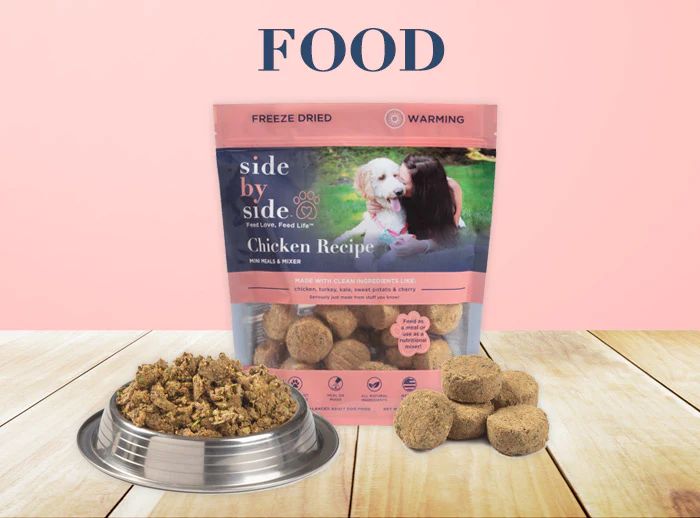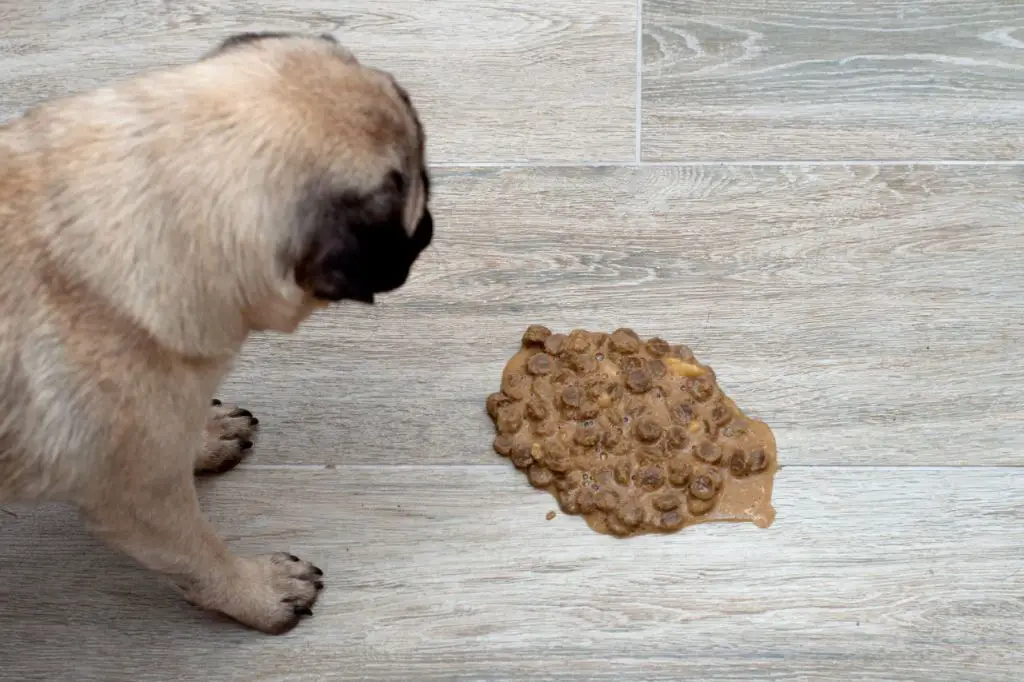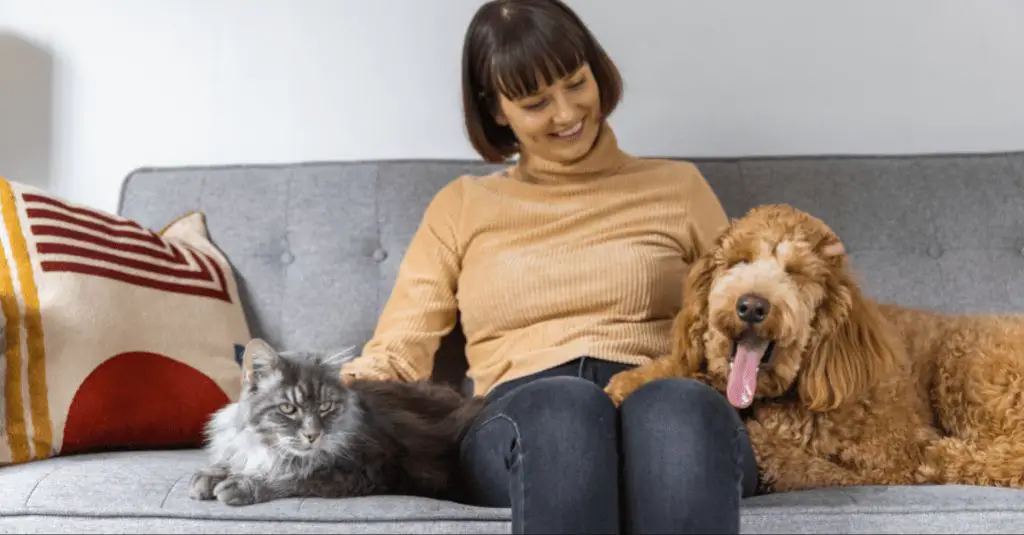Is It Safe For Cats To Eat Dog Food?
In small amounts, dog food is not toxic or poisonous to cats. However, dog food should not become a regular part of a cat’s diet. This is because dog food and cat food have very different nutritional formulations.
Dog food contains much higher levels of fats and proteins than cat food. It also contains lower levels of key nutrients that cats need, such as taurine. Taurine deficiency can cause heart problems in cats over time.

Consuming dog food occasionally as a snack or treat is unlikely to harm a cat. But if a cat frequently eats dog food in place of cat food, nutritional imbalances can develop. This puts the cat at risk of obesity, gastrointestinal issues, and other health problems down the road.
Eating very large amounts of dog food can also cause vomiting, diarrhea, and pancreatitis in some cases. So while dog food isn’t immediately toxic to cats, it should not become a regular part of their diet.
Nutritional Differences Between Cat and Dog Food
Cat and dog foods are formulated to meet the different nutritional needs of cats and dogs. Cats are obligate carnivores, meaning they need to eat meat and get certain nutrients from animal sources. Dogs are omnivores and can meet their nutritional needs with a combination of plant and animal ingredients. Here are some key differences between cat and dog foods:
Protein and Fat
Cat foods contain more protein and fat than dog foods. Cats need higher levels of protein from animal sources like meat, fish, and eggs to meet their nutritional requirements. Cat foods will contain 25-45% protein, whereas dog foods contain 18-25% protein. Cats also need more fat than dogs for energy and metabolism. Cat foods will have 15-30% fat, while dog foods are around 5-15%.
Fiber and Carbohydrates
Dog foods tend to be higher in fiber and carbohydrates than cat foods. Dogs are omnivores and can easily digest grains and vegetables as sources of carbs and fiber. Cats get most of their energy from protein and fat so they have a lower need for carbs and fiber. Typical dog foods contain 3-4% fiber while cat foods have 1-2%.
Taurine
Taurine is an essential amino acid for cats that supports heart and eye health. Unlike dogs, cats cannot synthesize enough taurine on their own and must get it from their diet. Cat foods are supplemented with added taurine, while dog foods do not contain added taurine. Feeding a dog food long-term could lead to taurine deficiency in cats.
Health Risks of Cats Eating Dog Food

There are several potential health risks for cats who eat dog food, especially if it becomes a regular part of their diet. Some of the main health concerns include:
Diarrhea from too much fiber – Dog food contains more fiber than cat food. While fiber is healthy for dogs, too much can cause diarrhea, gas, and digestive upset in cats. The high fiber content can irritate a cat’s gastrointestinal tract and cause stool to become loose, watery, and more frequent.
Obesity from higher carbs, less protein – Dog foods typically contain more carbs and less protein compared to cat food formulas. The higher carbohydrate content can lead to weight gain in cats over time, especially if they are free-fed dog food. The extra calories from carbs get stored as fat if not burned off through activity.
Nutrient deficiencies over time, especially taurine – Cats require certain nutrients like taurine, arginine, methionine, and protein in their diet. Dog food does not have high enough levels of these to meet a cat’s needs. Eating dog food as the main diet can cause cats to become malnourished over time leading to heart, vision, reproductive issues, and other health problems.
Signs Your Cat May Have Eaten Dog Food
If your cat did get into the dog’s food, there are some telltale signs to look out for. Here are the most common symptoms that indicate your cat has eaten dog food:
Diarrhea, vomiting, upset stomach
One of the first signs will likely be digestive upset like diarrhea, vomiting or loss of appetite. The improper nutrients and higher fat content in dog food can cause gastrointestinal issues for cats.
Dehydration
Related to vomiting and diarrhea is the risk of dehydration. Always make sure your cat has access to fresh, clean water if you suspect it ate dog food. Dehydration can quickly become dangerous for cats, so contact your vet if you notice signs like lethargy or loss of elasticity in the skin.
Weight gain
The higher calorie density and fat content in dog food compared to cat food can lead to weight gain, which can be harmful to cats long-term. Weigh your cat regularly and monitor its body condition if it had access to dog food.
Poor coat quality
A diet lacking the proper balance of nutrients can also show up in your cat’s coat. You may notice increased shedding, a dull coat, or skin flakiness if your cat ate dog food. This happens because dog food lacks the high levels of protein and certain fatty acids cats need for skin and coat health.
What To Do If Your Cat Ate Dog Food
If you discover your cat has eaten dog food, the first step is to monitor them closely for any symptoms or side effects over the next 24 hours. Signs of trouble may include vomiting, diarrhea, lack of appetite, or lethargy. These are signs that the cat food has upset their digestive system or caused other issues.

If any concerning symptoms last for more than 24 hours, it’s best to call your veterinarian. Persistent vomiting, diarrhea or lethargy can lead to dehydration and other health risks. The vet can advise you on the best course of treatment and examine your cat to check for any problems.
In addition to monitoring symptoms, you’ll also want to transition your cat slowly back onto cat food. Mix a small amount of cat food in with the dog food at first, gradually increasing the ratio of cat food over several days. An abrupt switch back to 100% cat food can further upset their digestive tract. Take things slowly to give their system time to readjust to cat food.
How To Keep Cats Out Of Dog Food
If your cat gets into your dog’s food often, there are some steps you can take to prevent this behavior:
Feed Dogs in a Separate Room
Feed your dog in a room that your cat does not have access to. Use baby gates or closed doors to keep your cat out while your dog is eating. This will prevent your cat from getting to the food in the first place.
Use Elevated Bowls
Elevated dog bowls or feeding stations that are raised off the floor can make it harder for cats to reach. Your dog can still eat comfortably while your cat is deterred from getting into the bowl.
Store Kibble in Sealed Containers
Keep your dog’s dry food stored in a sealed plastic, metal or ceramic container. Tight lids and latches prevent cats from being able to get in and snack. Store containers in closets, cabinets or pantries that cats can’t access.
By feeding dogs separately, using raised bowls and sealed storage containers, you can restrict your cat’s access to dog food. This will keep both pets happy and healthy.
Best Diet For Cats
Cats thrive on a high-protein, moderate-fat, low-carbohydrate diet. Here are some key nutritional guidelines for feeding cats:
High Protein (30% or More)
Cats need a lot of protein in their diet, as they are obligate carnivores and get most of their energy from protein and fat. Look for cat foods that contain at least 30% protein.
Taurine Fortified
Taurine is an essential amino acid for cats that they cannot synthesize on their own, so it must be obtained through their food. Reputable cat food brands will be fortified with added taurine.
Low Carbohydrates
Cats have a low tolerance for carbohydrates and do better on high protein, low carb diets. Grain-free or low grain cat foods are ideal.
Wet and Dry Foods
Feed your cat a combination of wet canned food and dry kibble. The canned food provides moisture, while the kibble helps clean teeth. Rotate different protein sources and brands.
Following these diet guidelines will help keep your cat lean, muscular, energetic and healthy.
Warning Signs of Illness From Wrong Diet
Cats who have eaten dog food, or who are on an improper diet in general, may start to show concerning symptoms and signs of illness. Here are some key things to watch out for:
Weight loss or weight gain: An improper diet can lead to weight fluctuations in cats. Weight loss may occur if the cat is not getting adequate nutrition from the wrong food. Rapid weight gain can happen if the cat eats too much of a high-calorie dog food.
Poor coat and shedding: The wrong diet deprives cats of the nutrients they need for skin and coat health. You may notice your cat’s fur becoming dull, brittle, dry, or oily. Increased shedding is also common.
Lethargy: Without the right balance of fats, proteins, vitamins and minerals, cats can become fatigued, low-energy, and lethargic. They may sleep more and be less active.
Increased urination: Issues like diabetes, kidney disease or urinary tract infections can cause cats to urinate more when on an improper diet. An increase in litter box visits, accidents, or urgency to urinate are red flags.
If you notice any of these symptoms in your cat, it’s important to call your veterinarian. Bloodwork and an exam will help determine if the symptoms are diet-related or caused by an underlying health issue. Your vet can advise you on getting your cat back on a healthy feline diet again.
When To See A Vet
If your cat ate dog food and is experiencing concerning symptoms, it’s important to have them seen by a veterinarian. Some signs to watch out for include:
Persistent diarrhea or vomiting – If your cat has ongoing digestive upset after eating dog food, they likely have a food intolerance or imbalance. Vomiting and diarrhea can lead to dehydration and electrolyte imbalances, so seek veterinary help if it persists beyond 24 hours.
Lethargy, lack of appetite – A noticeable decrease in energy levels or appetite may indicate your cat is not feeling well. Cats who don’t eat for more than 48 hours risk developing hepatic lipidosis, a serious liver disease. Bring them to the vet promptly.
Signs of pain or discomfort – Sensitivity around the belly, crying out, restlessness, or other signs your cat is unwell warrant an exam. Your vet can check for potential pancreatitis, inflammatory bowel disease, or other issues caused by the wrong diet.
It’s always better to be safe than sorry. If you have any concerns about your cat’s health after eating dog food, don’t hesitate to call your veterinarian. They can advise you on next steps and examine your cat to catch any problems early.
Preventing Future Food Stealing

There are several steps you can take to prevent your cat from stealing your dog’s food in the future:
Feed cats separately – Feed your cat in a separate room, behind a closed door so they can’t access the dog’s food bowl. This will prevent sneaky food stealing.
Monitor meal times – Don’t leave dog food out 24/7. Pick up uneaten dog food after your dog has finished eating. Only leave your dog’s food bowl down for as long as your dog needs to eat.
Secure trash cans – Make sure any discarded dog food packaging is in a closed trash can with a locking lid your cat can’t get into. This removes the temptation.
Use automatic feeders – An automatic pet feeder can dispense pre-portioned meals at set times only. This takes away the opportunity for your cat to graze from the dog’s bowl.